Reading the Weeds
What are your weeds trying to tell you?
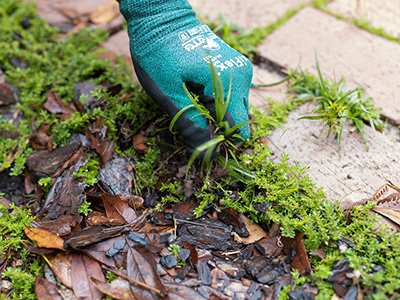
Just as your landscape plants are picky about nitrogen, pH, and moisture levels, each weed prefers a specific set of soil conditions, too. Improve the soil, and weeds will find your garden less inviting.
Below are some common garden and lawn weeds and the conditions they prefer. To confirm any of the problems, we suggest contacting your county Extension office or sending a soil sample to a reputable lab such as the UF/IFAS Extension Soil Testing Laboratory.
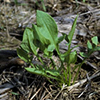
Red sorrel (Rumex acetosella) prefers soil with a low pH (acidic soil). You can raise the pH of your soil by adding liming materials and a good soil test will include a lime requirement test. Add lime with caution; it is very difficult to lower the pH of your soil if you accidentally raise it too high. Alternatively, you can install plants which prefer acidic soil, like blackberries, gardenias, azaleas, and blueberries. Photo: Theodore Webster, USDA Agricultural Research Service, Bugwood.org
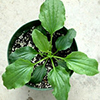
Broadleaf plantain (Plantago major) prefers soil with a high pH (alkaline soil). Unlike raising pH, lowering the pH of soil is very difficult, even impossible. Many of Florida’s soils are formed from calcium-containing materials like limestone, which keep the pH high. Routine applications of amendments with elemental sulfur or organic material should lower the pH for a time, but repeated application will be necessary. Instead, we suggest embracing your alkaline soil and choosing plants that prefer a high pH environment. Photo: Lynn Sosnoskie, University of Georgia, Bugwood.org
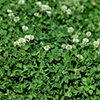
Clovers and other legumes are often an indication of soil with low nitrogen. These plants fix nitrogen in their roots, making them less dependent on the soil’s available nitrogen and the last survivors in a nitrogen-poor landscape. Because nitrogen levels change rapidly, soil tests don’t normally report nitrogen levels. A good soil test report will include nitrogen application rates for turf and ornamentals, so we still recommend it if you suspect low nitrogen. Add nitrogen to your soil responsibly by following recommended nitrogen fertilizer rates. This will help protect water quality and prevent plant injury. Photo: Chris Evans, University of Illinois, Bugwood.org
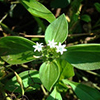
Florida pusley (Richardia scabra) and spurges (Euphorbia spp.) may indicate the presence of plant-parasitic nematodes. Nematodes are microscopic worms that are common in Florida’s soil. Unlike earthworms, plant-parasitic nematodes attack roots and feed on the plant fluids. Nematode feeding results in stubby, damaged roots and can stunt the plant’s growth significantly. Nematodes are difficult to manage in the landscape and impossible to eradicate. However, soil solarization, organic amendments, and nematode-resistant plants or cover crops can help plants fight existing nematode populations. Florida pusley photo: Rebekah D. Wallace, University of Georgia, Bugwood.org

Annual bluegrass (Poa annua) and chickweed (Stellaria media) are winter weeds and symptoms of a lawn regularly mown too low. Check the recommended mowing height for your turfgrass. You should also avoid removing more than a third of the blade at one time, so don’t let the grass get too long between mowings. Healthy turf will fight off these weeds with ease; contact your county Extension office for help improving your turfgrass maintenance. Annual blugrass photo: Ohio State Weed Lab, The Ohio State University, Bugwood.org

Goosegrass (Eleusine indica), also called silver crabgrass or crowfoot, is a turfgrass weed that thrives in compacted and wet soils. Soil compaction is usually the result of heavy foot or vehicle traffic and is common in newly constructed homes. Loosen soil with hoe, pitchfork, or tiller and consider adding organic matter before landscaping. Aerating your lawn can also help correct soil compaction in high traffic areas. If you’re repeatedly walking or driving over the same part of your landscape, install mulch or permeable pavers to serve as paths or driveways. Photo: John D. Byrd, Mississippi State University, Bugwood.org
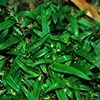
Sedges, doveweed, dollarweed, and eclipta all prefer soggy, wet soil. It is possible that your landscape is overwatered, but these plants may also be a sign of leaks in your irrigation system or of poor drainage. A 2011 report by UF/IFAS scientists states that “the majority of Florida in-ground irrigation systems have some type of maintenance problem that could be causing excessive water use.” For this reason, inspections should be done on a regular basis. If the irrigation system isn’t the culprit, but there are low spots that aren’t draining, consider adding soil to raise the elevation or diverting water away from the area with a new drain. You can also embrace the sogginess and turn the area into a rain garden. Doveweed photo: John D. Byrd, Mississippi State University, Bugwood.org
For more help identifying weeds and improving soil, please contact your county Extension office.
Also on Gardening Solutions
More From UF/IFAS
- Biology and Management of Common Chickweed (Stellaria media) in Ornamental Crop Production
- Biology and Management of Garden Spurge (Euphorbia hirta) in Ornamental Crop Production
- Florida Pusley Control in Pastures
- Goosegrass Biology and Management in Turf
- Nematode Management in Residential Lawns
- Nematode Management in the Vegetable Garden
- Plants for High pH Soils — UF/IFAS Extension Baker County
- Soil Compaction in the Urban Landscape
- Soil pH and the Home Landscape or Garden
- Weed Management Guide for Florida Lawns
- White Clover
